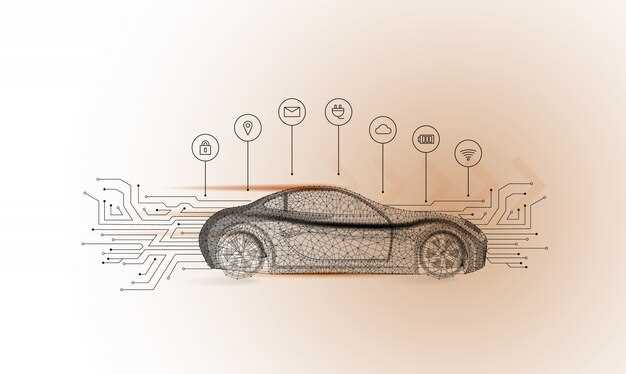How Fiat’s Model Range Evolved Over Time

The journey of Fiat as a prominent player in the automotive industry spans over a century, showcasing a remarkable evolution in its model range. From its inception in 1899, Fiat has consistently adapted to the changing demands of the automotive market, producing cars that reflect technological advancements and shifting consumer preferences.
Throughout its history, Fiat has introduced a diverse array of models, each representing a blend of innovation and style. The company’s ability to reinvent its offerings while staying true to its Italian heritage has allowed it to maintain a loyal customer base. As we examine the various phases of Fiat‘s development, it becomes evident that each model serves as a milestone, capturing the essence of its time and the aspirations of its drivers.
In this article, we will delve into the significant transformations within Fiat‘s vehicle lineup, exploring how each generation of cars has not only influenced the brand’s identity but also contributed to the overarching narrative of the automotive industry. From iconic classics to modern urban vehicles, the evolution of Fiat’s model range is a testament to its resilience and forward-thinking approach.
Key Milestones in Fiat’s Model Development

Fiat has left a significant mark on the automotive history with its innovative approach and diverse range of cars. Founded in 1899, the brand’s early years were characterized by the introduction of the Fiat 3½ HP, one of the first models that showcased the potential of motor vehicles and set the stage for future development.
In the 1930s, Fiat launched the Fiat 508 Balilla, which became iconic for its affordability and accessibility, making car ownership a reality for many Italian families. This model paved the way for the brand’s role in democratizing mobility.
The post-war era saw the introduction of the Fiat 500 in 1957. Known as the “Cinquecento,” this compact car revolutionized urban transport with its small size, economic efficiency, and distinctive design. The 500 not only became a symbol of Italian automotive style but also of social change in post-war Italy.
As the decades progressed, Fiat continued to innovate with models like the Fiat Panda, introduced in 1980. This vehicle was notable for its practical design and versatility, appealing to a broad range of consumers and solidifying Fiat’s reputation as a leader in creating functional cars.
In the 2000s, Fiat underwent a significant transformation, unveiling the new Fiat 500 in 2007, a modern iteration that pays homage to its predecessor. This model attracted a global audience and successfully blended retro design with contemporary technology, revitalizing the brand.
More recently, Fiat has embraced electrification, marking a new chapter in its history with the introduction of electric variants like the Fiat 500e. This transition reflects the brand’s commitment to sustainability and innovation as it adapts to the evolving automotive landscape.
Through these key milestones, Fiat has not only shaped the cars it produces but has also played a crucial role in the broader narrative of automotive development, continually responding to the needs of consumers and the demands of the market.
Popular Fiat Models Through the Decades
Fiat has a long and rich history in the automotive industry, producing a wide range of cars that have made a significant impact on the market. Each decade brought forth iconic models that not only defined the brand but also influenced automotive design worldwide.
In the 1960s, one of the standout models was the Fiat 124. This compact car was celebrated for its innovative design and reliability, quickly gaining popularity across Europe and beyond. The 124 even won the European Car of the Year award in 1967.
-
Fiat 500 (1957-1975)
The Fiat 500, affectionately known as the ‘Cinquecento’, debuted in 1957 and became a symbol of Italian automotive culture. Its small size, efficiency, and charming design made it an urban favorite, revolutionizing city travel.
-
Fiat 128 (1969-1985)
Launched in 1969, the Fiat 128 introduced front-wheel drive to the mass market. This model became highly influential, setting the standard for compact cars globally.
-
Fiat Panda (1980-present)
The Fiat Panda emerged in 1980 as a versatile city car. Known for its practicality and spacious interior, it appeals to various drivers, still in production due to its enduring popularity.
Entering the 1990s, Fiat launched the Punto, a supermini that received acclaim for its design and driving experience. The Punto played an essential role in Fiat’s sales strategy and became one of the best-selling cars in Europe.
-
Fiat Bravo/Brava (1995-2001)
This hatchback model was well-received for its sporty look and excellent handling. The Bravo and Brava showcased Fiat’s ability to combine aesthetics with performance.
-
Fiat Doblo (2000-present)
The Doblo is a versatile multi-purpose vehicle that has found its niche in both family use and commercial applications. Its roomy interior offers flexibility for various needs.
In the 2000s, Fiat revitalized its image with the relaunch of the Fiat 500 in 2007, a modern interpretation of the classic model. This vehicle has been a commercial success, combining retro styling with contemporary technology.
Overall, Fiat’s history is marked by a series of innovative and popular models that reflect the changing needs of drivers over the decades. From compact city cars to versatile vehicles, Fiat continues to adapt and thrive in the automotive landscape.
Technological Innovations Introduced in Fiat Cars

Fiat has a rich history of innovation in the automotive industry, consistently pushing the boundaries of technology in their cars. One of the most notable advancements came in the early 1970s with the introduction of the Fiat 127. This model was among the first to feature a transverse engine, allowing for a more efficient use of space and improved handling.
In the 1980s, Fiat expanded its technological prowess with the Uno, which included innovations such as a modular platform design. This model allowed for greater flexibility in manufacturing, making it easier for Fiat to adapt to changing market demands while maintaining a focus on cost-effectiveness.
The launch of the Fiat Punto in the mid-1990s marked another significant milestone. It was one of the first models to incorporate computer-aided design (CAD) in its development process, resulting in enhanced aerodynamics and fuel efficiency. This car demonstrated how technology could be leveraged to create a more environmentally friendly vehicle while retaining performance.
As the 21st century approached, Fiat turned its attention to safety and connectivity. The introduction of the Fiat 500 in 2007 featured advanced safety technologies, including multiple airbags and electronic stability control. Additionally, this model embraced the digital era with its infotainment system, offering drivers a seamless connection to their devices.
In recent years, Fiat has actively pursued sustainability through the incorporation of alternative fuel technologies. The launch of the Fiat 500e, an all-electric variant, highlighted the brand’s commitment to a greener future. This model utilizes cutting-edge battery technology, providing a zero-emission driving experience while retaining the charm and style Fiat is known for.
The history of Fiat cars is marked by a continuous evolution of technological innovations. From advanced engine designs to smart safety features and sustainable options, Fiat remains a key player in shaping the future of the automotive industry.


